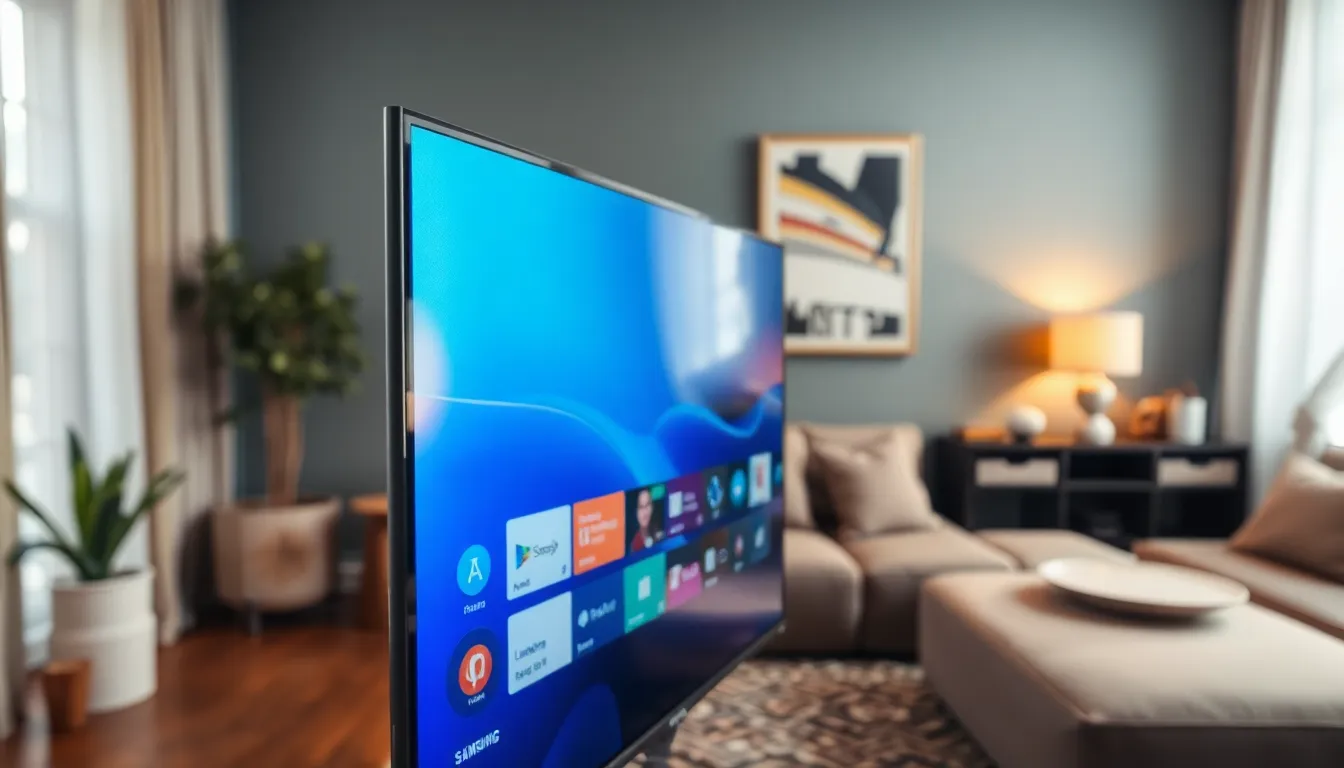Picture this: you’re settling in for an epic movie night, popcorn in hand, only to be greeted by a Samsung TV that seems to have taken a sabbatical. Lagging can turn thrilling action scenes into a slow-motion replay that leaves viewers more confused than entertained. It’s like trying to run a marathon in flip-flops—frustrating and just plain wrong.
But fear not! This isn’t a lost cause. Understanding why your Samsung TV is lagging can help you reclaim your viewing experience. From pesky software glitches to connection issues, there are solutions that can bring back the smooth, cinematic magic you crave. Let’s dive into the world of TV lag and discover how to get that picture-perfect performance back on track.
samsung tv lagging
Samsung TV lagging presents a significant challenge for viewers, impacting the overall enjoyment of content. Identifying the causes and consequences of lag can help users find effective solutions.
Common Causes of Lagging
Multiple factors contribute to lagging on Samsung TVs. Software glitches often create performance issues, affecting video playback. Connection problems might arise from slow internet speeds or weak Wi-Fi signals, disrupting streaming quality. Outdated firmware can lead to inefficient processing, causing delays in response times. Additionally, using incompatible devices or settings can exacerbate lag issues. Understanding these common causes enables users to tackle them effectively.
Impact on User Experience
Lagging can severely diminish the viewing experience on Samsung TVs. Frustration builds when users can’t enjoy their favorite movies or shows due to interrupted playback. Slow response times during live sports can lead to missed moments, resulting in dissatisfaction. User engagement declines when lag interrupts the immersive experience that high-quality visuals and sound provide. Viewers may find themselves adjusting settings or troubleshooting frequently, detracting from relaxation and enjoyment. Addressing lag enhances overall satisfaction and ensures a seamless viewing experience.
Diagnosing Samsung TV Lagging

Identifying the source of lag on a Samsung TV requires a systematic approach. Start by investigating internet connectivity, as weak signals often cause disruptions.
Checking Internet Connection
Assess the internet connection quality first. A minimum speed of 25 Mbps is recommended for streaming videos in 4K quality. Inadequate bandwidth leads to buffering issues, creating significant lag. Wireless routers may need rebooting or repositioning to enhance signal strength. Checking for interference from walls or other electronic devices can also be crucial. Testing the connection speed using an online speed test provides valuable data. Consistent speeds below the desired threshold indicate the need for a more stable connection.
Evaluating TV Settings
Reviewing the TV settings plays a vital role in performance. Ensuring that the firmware is up to date can resolve many bugs associated with lag. Navigating to the settings menu allows users to enable game mode, which optimizes input response times. Additionally, adjusting picture settings can reduce processing time, improving overall playback. Disabling any unnecessary features like motion smoothing enhances fluidity in fast-paced scenes. Accessing the network settings lets users verify connectivity status, ensuring a smooth experience across apps.
Solutions for Samsung TV Lagging
Resolving lag on a Samsung TV involves a few practical steps that can substantially enhance performance.
Adjusting Video Settings
Adjusting video settings can lead to noticeable improvements. Turning on game mode reduces input lag significantly, especially during fast-paced action scenes. Reducing the picture quality may also help; settings like motion smoothing can increase processing time, so switching these off often results in smoother playback. Users should explore settings for brightness, contrast, and sharpness to find the optimum configuration tailored to their viewing environment.
Updating Software and Firmware
Keeping software up to date remains crucial. Firmware updates often contain fixes that enhance overall performance and resolve bugs causing lag. Regularly checking for updates through the settings menu ensures that the TV operates on the latest version. Implementing these updates provides users with access to features designed to improve streaming performance. Schedule periodic checks to maintain optimal functionality and prevent any disruptions during viewing experiences.
Using a Wired Connection
Utilizing a wired connection can enhance streaming performance significantly. Ethernet cables provide more stability compared to Wi-Fi, minimizing interruptions and latency. Connecting directly to the router often results in faster speeds, especially when streaming high-definition content. Users should consider running a speed test to confirm the effectiveness of the wired connection against their current Wi-Fi speeds. Transitioning to a wired setup often resolves persistent lag issues.
Preventing Future Lagging Issues
Taking steps to prevent lagging on a Samsung TV improves overall viewing experiences. Regular maintenance and smart streaming practices play crucial roles in maintaining device performance.
Regular Maintenance Tips
Cleaning the TV regularly removes dust and debris that can interfere with ventilation and performance. Checking for software updates frequently ensures the TV runs the latest firmware, which fixes previous glitches. Users should also verify the network connection settings to optimize connectivity. Testing the internet speed at different times reveals fluctuations in performance, allowing proactive adjustments. Additionally, resetting the TV to factory settings occasionally may resolve persistent issues and improve responsiveness.
Best Practices for Streaming
Choosing high-quality streaming services enhances playback stability. Opting for wired Ethernet connections significantly boosts speed compared to wireless options. Limiting the number of devices sharing the network reduces bandwidth strain and mitigates lag. Users should also avoid peak usage hours when internet traffic is typically higher. Ensuring that the router is positioned for maximum coverage can prevent weak signals from causing disruptions during streaming. Following these practices helps maintain a smooth viewing experience without interruptions.
Conclusion
Addressing lag on a Samsung TV can transform the viewing experience from frustrating to enjoyable. By understanding the root causes and implementing the suggested solutions, users can significantly improve performance. Regular maintenance and proactive measures play a crucial role in preventing future issues.
With a little effort in optimizing settings and ensuring a stable connection, viewers can enjoy their favorite movies and shows without interruption. Ultimately, these steps lead to a more engaging and satisfying entertainment experience, allowing everyone to fully immerse themselves in the content they love.

